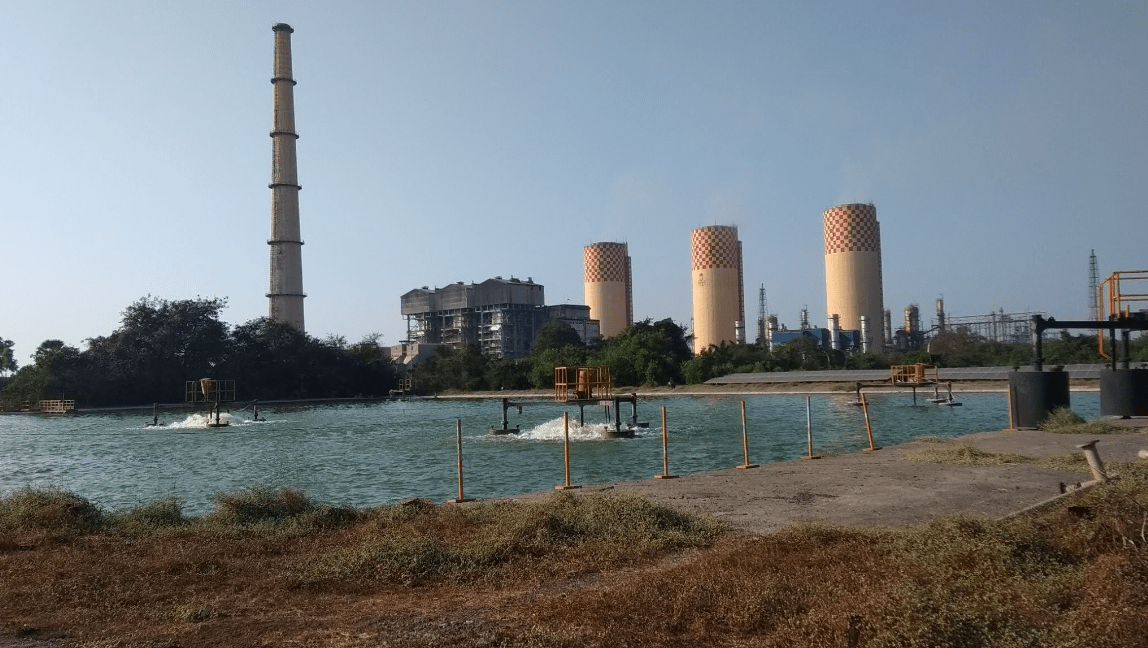In the world of industrial chemicals and fertilizers, Rashtriya Chemicals & Fertilizers Ltd (RCF) has been a trusted name for years. With a 75% stake owned by the Government of India (GOI), RCF is a public sector undertaking (PSU) that specializes in the manufacturing and marketing of fertilizers and industrial chemicals.
PROS:
1. Reduced Debt: RCF has successfully reduced its debt burden, indicating a healthier financial outlook.
2. Expected Strong Quarter: Investors are looking forward to a promising quarter, demonstrating positive growth prospects.
3. Impressive Profit Growth: RCF has maintained an exceptional 62.9% Compound Annual Growth Rate (CAGR) in profits over the last 5 years, signifying its robust financial performance.
4. Steady Dividend Payout: The company has consistently maintained a healthy dividend payout rate of 34.4%, attracting income-seeking investors.
5. Improved Debtor Days: RCF has significantly improved its debtor days, reducing them from 64.8 to 44.4 days, which suggests more efficient financial management.
KEY POINTS:
Business Segments:
– Industrial Products: RCF contributes 14% of its revenue from the production of various industrial chemicals used in the manufacture of dyes, solvents, pharmaceuticals, and more.
– Fertilizer Products: The majority, 86% of revenue, comes from manufacturing fertilizers, including Urea, NP/NPK, and biofertilizers under brand names like Ujwala, Suphala, and Biola.
Manufacturing Facilities:
– RCF operates two units, one in Trombay, Mumbai, and the other in Thal, Raigad district, both crucial to its production of fertilizers, chemicals, and industrial products.
Production Capabilities
– The Thal unit produced 19.12 lakh MT of Urea in FY21, while the Trombay Unit produced 3.38 lakh MT of Urea and 5.37 lakh MT of Suphala 15:15:15, contributing to the company’s substantial production capabilities.
Exports:
– RCF exported 120MT of Suphala 15:15:15 to Sharjah, showcasing its global reach and the potential for further international expansion.
New Projects:
– A significant endeavor includes a Coal Gasification plant in collaboration with Coal India Limited and Fertilizer Corporation of India Limited, aiming to set up a fertilizer complex in Odisha.
– RCF is actively participating in the revival of five closed urea plants, emphasizing its commitment to growth and expansion.
Settlement of Dispute:
– RCF successfully resolved a long-standing dispute with GAIL, highlighting its dedication to maintaining strong relationships with partners and stakeholders.
Analyzing the valuation metrics for Rashtriya Chemicals & Fertilizers Ltd (RCF) involves assessing various financial ratios and indicators to determine the company’s investment attractiveness. Here are some key valuation metrics to consider:
1. Price-to-Earnings (P/E) Ratio: The P/E ratio compares the company’s current stock price to its earnings per share (EPS). A lower P/E ratio may suggest that the stock is undervalued, while a higher ratio may indicate that it’s overvalued. It’s important to compare RCF’s P/E ratio to industry peers for context.
2. Price-to-Book (P/B) Ratio: The P/B ratio evaluates the stock’s market value in relation to its book value (total assets – total liabilities). A P/B ratio less than 1 can imply that the stock may be undervalued.
3. Price-to-Sales (P/S) Ratio: The P/S ratio measures the stock’s price against its revenue per share. A lower P/S ratio could indicate that the stock is undervalued relative to its sales.
4. Dividend Yield: Dividend yield is the annual dividend payment as a percentage of the stock’s current price. A higher dividend yield may be attractive to income-focused investors.
5. Earnings Growth: Assess the historical and projected earnings growth of RCF. Companies with strong and consistent earnings growth may be considered more valuable.
6. Debt-to-Equity Ratio: The debt-to-equity ratio reflects the company’s financial leverage. A lower ratio indicates less reliance on debt for financing, which can be viewed as positive.
7. Return on Equity (ROE): ROE measures how efficiently a company uses shareholders’ equity to generate profits. A higher ROE is generally seen as favorable.
8. Free Cash Flow: Free cash flow indicates the company’s ability to generate cash after covering operating expenses and capital expenditures. Positive free cash flow is important for future growth and debt reduction.
9. Enterprise Value (EV) to EBITDA Ratio: This ratio assesses a company’s valuation, factoring in debt and cash. A lower EV/EBITDA ratio may suggest an undervalued company.
10. PEG Ratio: The Price/Earnings to Growth (PEG) ratio considers both the P/E ratio and the company’s growth rate. A PEG ratio close to 1 can indicate fair valuation.
11. Discounted Cash Flow (DCF) Analysis: DCF estimates the intrinsic value of the company by projecting future cash flows and discounting them to present value. Comparing the DCF valuation to the current stock price can provide insights into its attractiveness.
12. Comparative Analysis: Evaluate RCF’s valuation metrics in comparison to industry peers and sector benchmarks. This can offer a more comprehensive view of its relative value.
It’s important to note that valuation metrics should be considered in the context of the company’s specific industry, competitive position, and economic conditions. Additionally, investors should conduct thorough research and consider both quantitative and qualitative factors before making investment decisions.
For Rashtriya Chemicals & Fertilizers Ltd (RCF), key drivers in its business encompass factors specific to its industry and operations. Given RCF’s primary focus on manufacturing and marketing fertilizers and industrial chemicals, the key drivers for RCF’s business include:
1. Fertilizer Demand: The demand for fertilizers, especially products like Urea, NP/NPK, and biofertilizers, directly impacts RCF’s sales and revenue.
2. Agricultural Trends: RCF’s performance is closely tied to the agricultural sector, so trends in agriculture, including planting seasons, crop types, and government agricultural policies, can be critical drivers.
3. Raw Material Costs: The costs of raw materials used in fertilizer and chemical production, such as ammonia and other industrial chemicals, significantly affect RCF’s cost structure and profitability.
4. Government Policies and Subsidies: Government policies related to fertilizers, subsidies, and pricing can have a profound impact on RCF’s business operations and profitability.
5. Competitive Landscape: RCF’s position within the competitive landscape, including pricing strategies and market share, is crucial for its performance.
6. Global Fertilizer Market: International fertilizer market dynamics and export opportunities can be key drivers, as RCF has the potential for international expansion.
7. Technological Advances: Staying up-to-date with advancements in fertilizer and chemical manufacturing processes and technology can enhance efficiency and cost-effectiveness.
8. Environmental Regulations: Compliance with environmental regulations is essential in the chemical and fertilizer industry, impacting production processes and costs.
9. Distribution and Supply Chain: Efficient distribution and supply chain management are necessary to ensure timely delivery of products to farmers and industrial customers.
10. Quality Control: Maintaining high product quality is essential for customer satisfaction and regulatory compliance.
11. R&D and Innovation: Ongoing research and development to improve product offerings and develop new solutions is crucial in a competitive industry.
12. Investment in Infrastructure: Investments in manufacturing facilities, transportation, and storage can drive operational efficiency.
13. Labor and Workforce: Skilled labor and workforce management are important, particularly in industries with complex manufacturing processes.
14. Weather and Climate: Weather patterns and seasonal variations can significantly affect fertilizer demand and production schedules.
15. Global Economic Factors: Economic conditions, such as inflation and exchange rates, can influence production costs and international trade.
16. Customer Relationships: Building and maintaining strong relationships with agricultural and industrial customers can drive repeat business and loyalty.
17. Government Initiatives: Participation in government initiatives, such as revival projects and partnerships, can open new opportunities for RCF.
RCF must carefully navigate these key drivers to ensure the continued success and growth of its business in the highly specialized and regulated field of fertilizer and industrial chemical production.
Rashtriya Chemicals & Fertilizers Ltd, with its rich history and continued commitment to growth and innovation, appears to be a promising investment opportunity for those looking to capitalize on India’s robust chemical and fertilizer industry.















